Boudhanath Stupa
Label : Top Attraction
Tags : Buddhist Temple
Timings : 24 hours
Entry Fee : Foreign nationals and Chinese citizens: NPR 400
SAARC nationals: NPR 100
Nepalese citizens: No entry fee
Children (below 10 years old, irrespective of their nationalities): No entry fee
Buddha Stupa Kathmandu
Ways to Experience this attraction
Boudhanath Stupa, Kathmandu Overview
Boudhanath Stupa is one of the world's largest and most significant stupas. This UNESCO World Heritage Site holds immense religious and cultural importance, particularly for Tibetan Buddhists. The stupa is a massive white dome structure with a striking golden spire atop it. Its design represents the mandala, a symbol of the universe in Buddhist cosmology.
In 1979, Boudhanath Stupa was honored as a UNESCO World Heritage Site. The Boudhanath Stupa has acquired several names throughout the years, including the Buddha Stupa, Chorten Chempo, Chaitya, Jarung Khashor, and the Khasti. The entire complex of the stupa houses 50 Tibetan convents, known as gompas, which have been acting as shelters for Tibetan refugees since 1959. This stupa is said to be the spot where the remains of Kassapa Buddha lay at rest. Thousands of pilgrims from different religions gather here daily. They perform a ritualistic circumnavigation, known as the 'kora', of the colossal dome. Anyone who circumambulates the stupa with no ill thoughts in their hearts is believed to receive good karma. The area around Boudhanath Stupa is dotted with numerous monasteries and smaller stupas.
Read More on Boudhanath Stupa
Legend of Boudhanath Stupa
The Newari Buddhist Beliefs
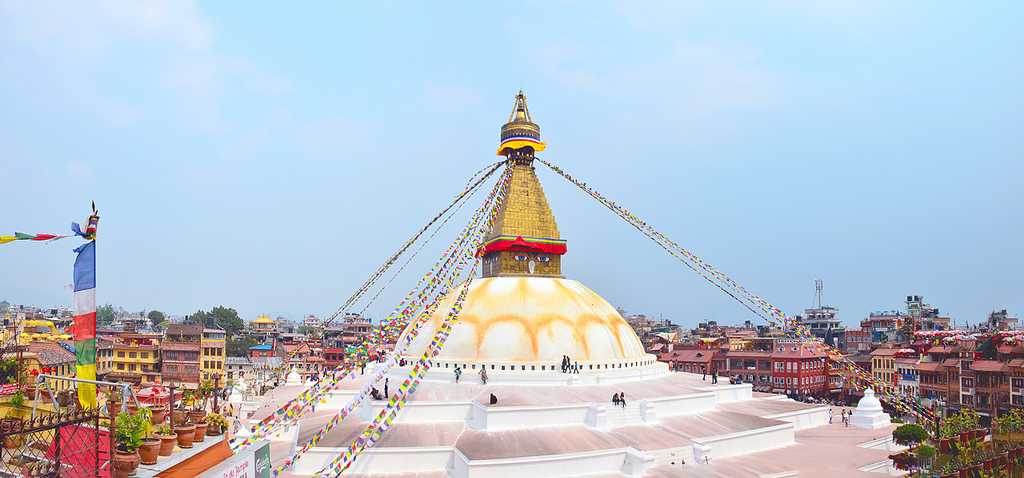
As the historical legend of Nepal goes, the Licchavi King Vikramaditya ordered that a stone water tap, known as Dhunge Dhara, be built in the southern part of the courtyard of his palace. However, after being made, there was no trace of water from it. Worried and confused, the king sought advice from astrologers. They suggested that human sacrifice should be performed on a male candidate who had thirty-two perfections, or 'battislakshanas'. The only people to possess these qualities were the king and his two sons. The king decided to give his own life and instructed one of his sons to perform the sacrificial ceremony.
According to the Newari Buddhist mythology, the king's head flew off and landed at a place near the sacred Bajrayogini Temple during the time of sacrifice. After the ceremony was over, the prince, with a heavy heart, dropped a hen from the top of the temple and made up his mind to construct a stupa on the spot where it landed. Thus, today, the stupa stands on the place where the hen had marked its spot.
The Traditional Tibetan Text
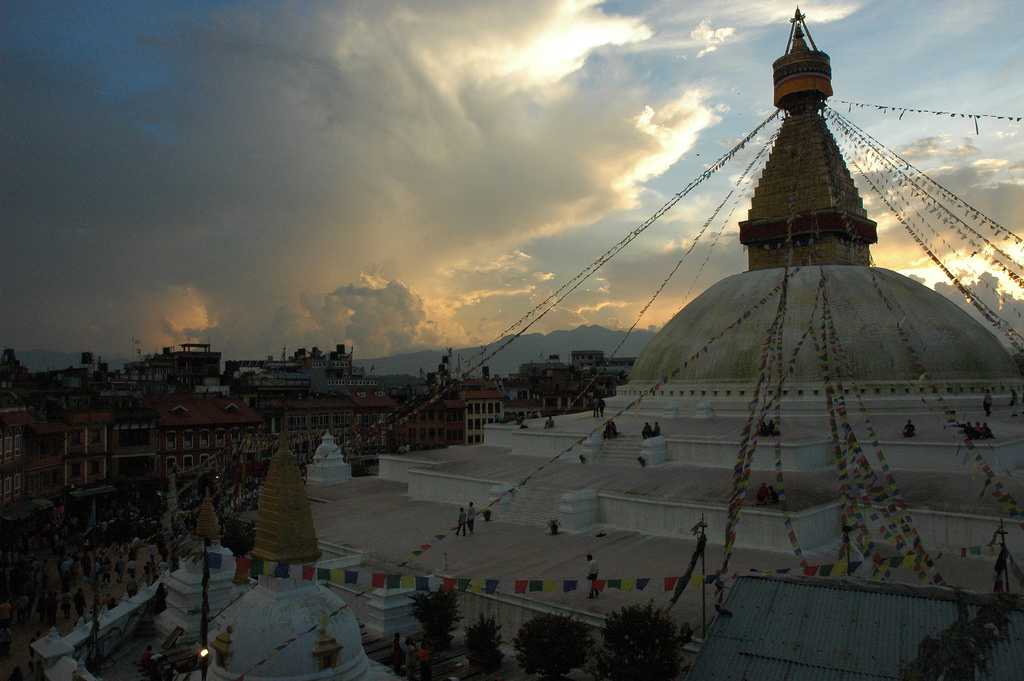
Source
The Tibetan Buddhist Text enumerates how one of the daughters of Indra had once stolen flowers from Heaven and had been reincarnated as a poor poultry man's daughter on earth. In spite of coming from a lowly family, she prospered and decided to build a stupa to honour a mythical Buddha who belonged to an earlier age. She chose to pay for all the expenses with her wealth and petitioned the king, who cruelly granted her only as much area of land as a buffalo hide could cover. However, the woman decided to remain undaunted. She cut the buffalo skin into strips as thin as threads and linked them from one end to the other to enclose a massive area, which led to the construction of this gargantuan stupa.
History
Structure and Architecture of Boudhanath Stupa
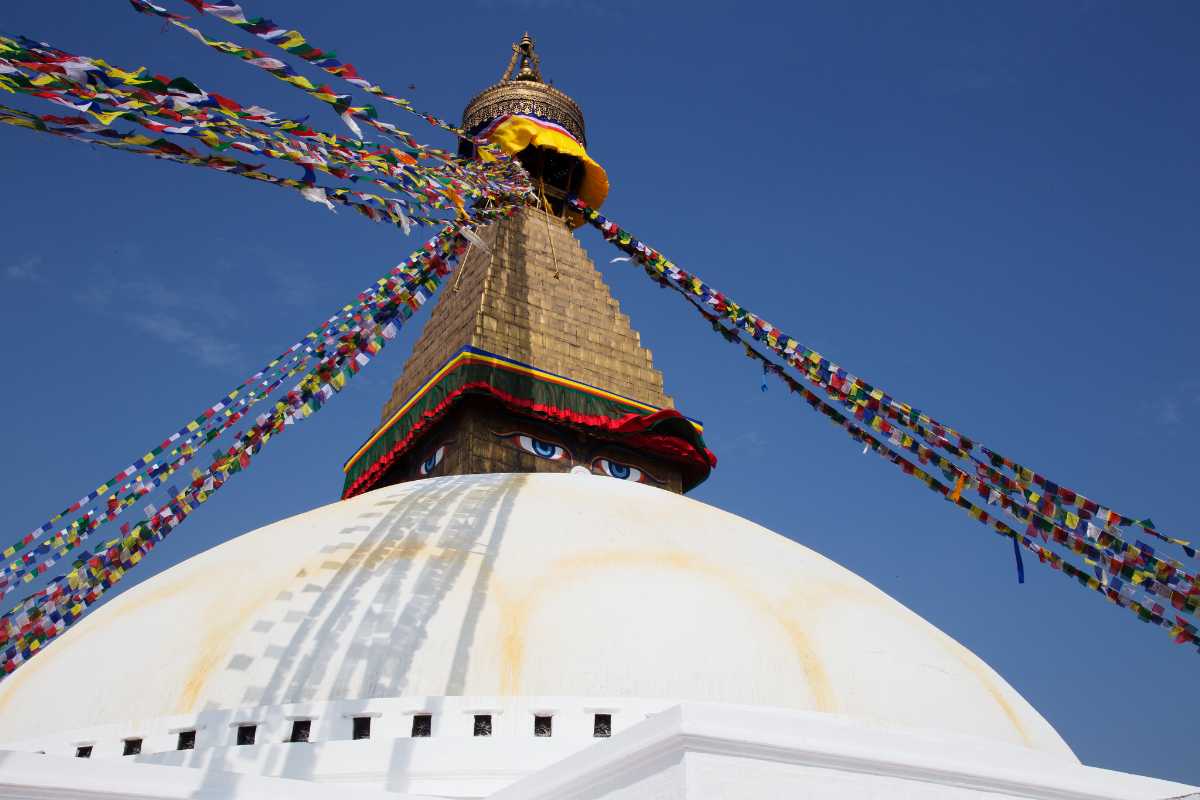
Source
The resplendent Boudhanath Stupa is a historical landmark of Nepal. From the top, the magnificent monument seems like a huge mandala. The monument is made up of several octagonal platforms, with stairs that lead to the white hemispheric tower mast. These stairs are adorned with a row of stone figures of lions. The bottom of the stupa is embellished with 108 figurines of the Buddha carved out of stone at the bottom. On the prayer wheels beside the niches of the Buddha is carved the mantra of Bodhisattva Avalokiteshvara, "Om Mani Padme Hum". The three platforms, the size of each a little smaller than the one at its bottom, make up the base of the stupa and symbolises the element earth.
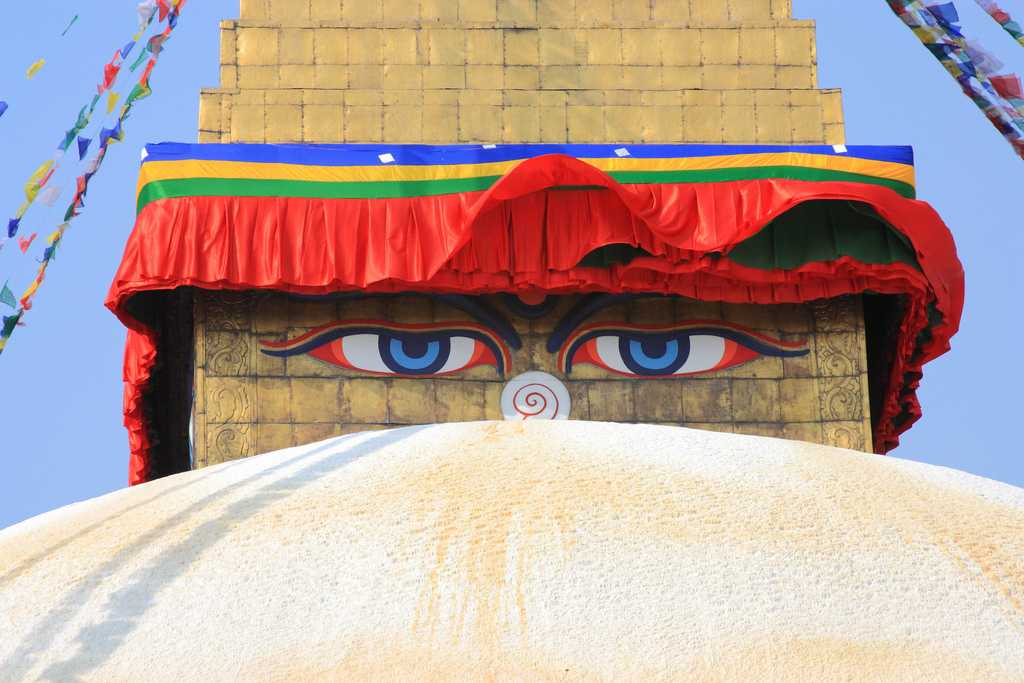
Source
There are two spherical plinths which support the hemispherical shape of the stupa. These bowl-like structures symbolise water. The element of water represents the broadness of the universe. The next tower, square in shape, is painted with huge eyes of the Buddha on all four sides. These eyes symbolise the Buddhist faith which believes that even after his demise, the Buddha is watching over them. Instead of a nose, the painting has a symbol which is similar to a question mark. This is actually the number 1 in the Nepali numerical system. It represents unity. Above the eyes of the Buddha is painted a third eye, which symbolises his all-knowing nature.
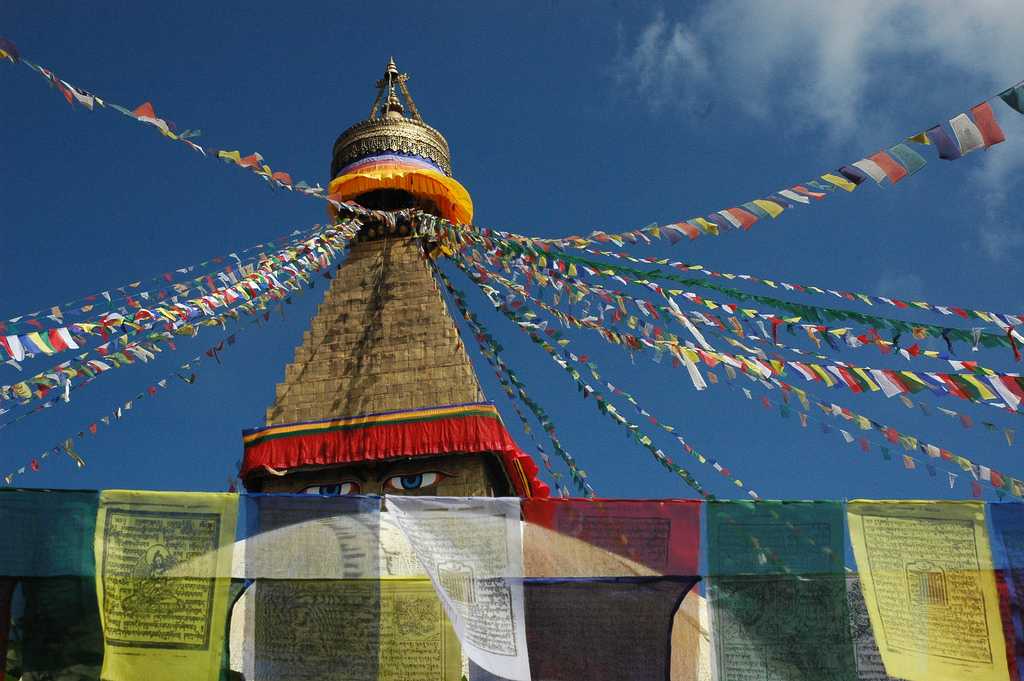
Source
The pyramid, which tops the foursquare tower, represents the element fire. It leads to thirteen steps which keep shrinking as they move upward, symbolising the ladder to enlightenment, and comes to an end at a golden spire. The gilded canopy of the spire, decorated with colourful prayer flags, represents air. Finally, the spire is symbolic of the fifth element in the Buddhist belief, the "Buddha Vairocana and ether". The five colours of the flags represent the five elements of nature as well as the Five Pure Lights. These flags are said to carry the prayers of the devotees to Heaven whenever they flutter in the wind.
Apart from the five elements, the Boudhanath Stupa is a repository of other symbols as well. The nine levels of the monument symbolise the folkloric Mount Meru, which is believed to be the core of the cosmos according to Buddhist beliefs. The 13 rings which rise from the base to the summit represent the path towards achieving enlightenment, usually referred to as Bodhi. The main gate of the stupa is on the northern side of the monument. Here, the ancestor of the Buddha, Amoghasiddhi, presides. Below this statue resides the Buddha Maitreya.
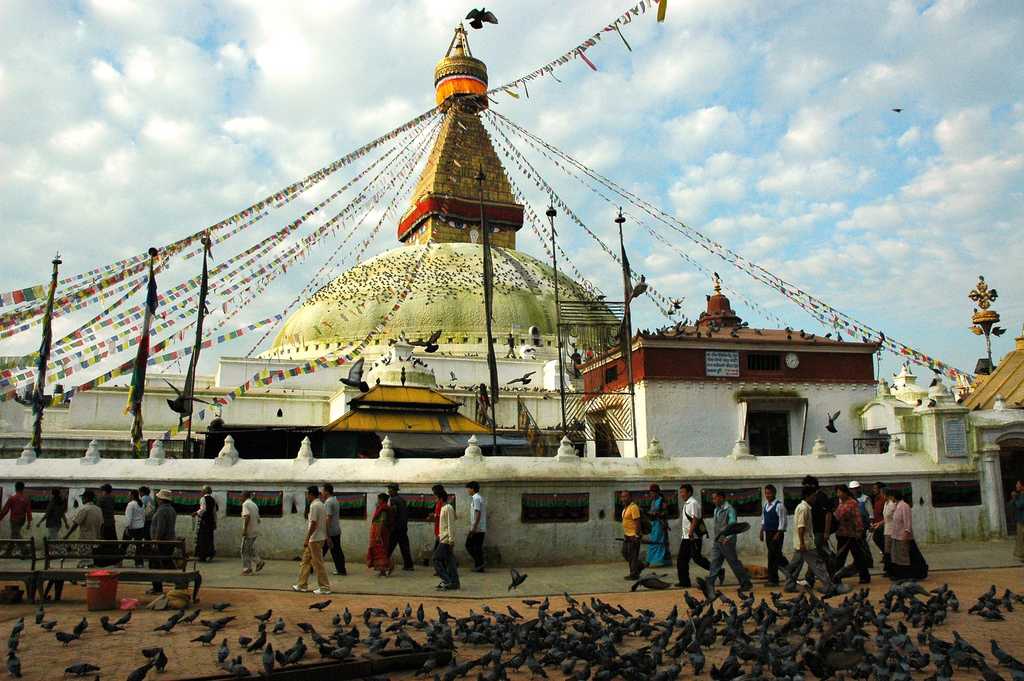
The stupa, standing at a towering height of 36 metres, is not only famed for its grandiose form but also because it is the centre of the Tibetan Buddhist Culture in Nepal. There is scarcely any place which matches the picturesque beauty and magnificence of the Boudhanath Stupa. With the rising scent of incense and the tranquil atmosphere surrounding it as the devotees prostrate in front of it, the monument takes on a surrealistic aura. A trip to Nepal is definitely incomplete without paying a visit to the Boudhanath Stupa.
